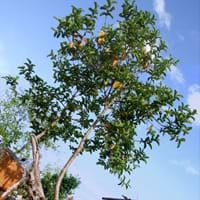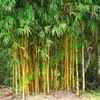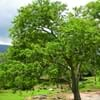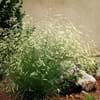Life Span
Perennial
Perennial
Type
Grass
Broadleaf Evergreen
Origin
China
Central America, South America
Types
Not Available
Tropical White , Tropical Pink , Mexican Cream (Tropical Yellow) , Red Malaysian ,Lemon Guava
Number of Varieties
Not Available
Habitat
Forest margins, gardens, Grassland, Tropical regions
Subtropical climates, subtropical regions
USDA Hardiness Zone
8-15
10-11
AHS Heat Zone
12 - 1
Not Available
Sunset Zone
H1, H2, 8, 9, 14, 15, 16, 17, 18, 19, 20, 21, 22, 23, 24
21,22
Habit
Clump-Forming
Narrow Upright/Fastigiate
Minimum Width
Not Available
Flower Color
Not Available
White
Flower Color Modifier
Bicolor
Bicolor
Fruit Color
Not Available
Yellow, Pink
Leaf Color in Spring
Light Green, Dark Green
Olive, Dark Green
Leaf Color in Summer
Light Green
Olive, Dark Green
Leaf Color in Fall
Light Green, Dark Green
Olive, Dark Green
Leaf Color in Winter
Light Green, Dark Green
Olive, Dark Green
Leaf Shape
Grass like
Oval to egg shaped
Plant Season
Spring, Summer, Fall, Winter
Spring, Summer, Fall, Winter
Sunlight
Full Sun, Partial Sun, Partial shade
Partial Sun
Type of Soil
Loam, Sand
Loam
The pH of Soil
Acidic, Neutral, Alkaline
Neutral
Soil Drainage
Average
Average
Bloom Time
Not Available
Spring
Tolerances
Drought
Drought
Where to Plant?
Ground, Pot
Ground
How to Plant?
Seedlings, Transplanting
Cuttings, Grafting, Seedlings
Plant Maintenance
Medium
Medium
Watering Requirements
Keep the ground moist but not water-logged, Requires regular watering, Use and maintain water-efficient soaker hoses, Use Mulches to help prevent water loss during hot and windy weather, Water every two or three days during warmer months, Water twice a day in the initial period
Requires regular watering, Use and maintain water-efficient soaker hoses
In Summer
Lots of watering
Lots of watering
In Spring
Moderate
Moderate
In Winter
Average Water
Average Water
Soil pH
Acidic, Neutral, Alkaline
Neutral
Soil Type
Loam, Sand
Loam
Soil Drainage Capacity
Average
Average
Sun Exposure
Full Sun, Partial Sun, Partial shade
Partial Sun
Pruning
Remove damaged leaves, Remove dead branches, Remove dead leaves
cut main trunk every 5 years, Remove damaged leaves, Remove dead branches, Remove dead leaves
Fertilizers
All-Purpose Liquid Fertilizer
All-Purpose Liquid Fertilizer, herbicides
Pests and Diseases
Red blotch
Mealybugs, Red blotch, Scale, Whiteflies
Plant Tolerance
Drought
Drought, saturated soil
Flower Petal Number
Single
Single
Foliage Texture
Medium
Medium
Foliage Sheen
Matte
Matte
Attracts
Birds
Birds, pollinators
Allergy
no allergic reactions
Constipation
Aesthetic Uses
Beautification
Not Available
Beauty Benefits
Not Available
Acne, allergy clogging, Anti-ageing, Blackheads, Good for skin and hair, Not Available
Environmental Uses
Air purification
Air purification, Food for animals, Food for birds, Nesting sites for birds
Medicinal Uses
Not Available
anti hemorrhagic, Antibiotic, Digestive
Part of Plant Used
Whole plant
Fruits, Whole plant
Other Uses
Culinary use, Used in construction, Used in Furniture, Used in making musical instruments, Used in paper industry
Added to salads, Can be boiled and seasoned, pickled, Sauces
Used As Indoor Plant
No
No
Used As Outdoor Plant
Yes
Yes
Garden Design
Container, Feature Plant, Hedges, Screening / Wind Break, Tropical
Container, Edible, Fruit, Fruit Tree, Shade Trees
Botanical Name
BAMBUSA multiplex 'Alphonso-Karrii'
PSIDIUM guajava 'Thai White'
Common Name
Alphonse Karr Bamboo, Clumping Bamboo, Hedge Bamboo
common guava, yellow guava, lemon guava
In Hindi
अल्फोंस Karr बांस
अमरूद
In German
Alphonse Karr Bamboo
Echte Guave
In French
Alphonse Karr Bamboo
Goyavier
In Spanish
Alphonse Karr Bambú
guayaba
In Greek
Alphonse Karr Μπαμπού
Goiabeira
In Portuguese
Alphonse Karr Bamboo
Goiabeira
In Polish
Alphonse Karr Bamboo
Gujawa pospolita
In Latin
Alphonse Karr Bamboo
Goiabeira
Phylum
Not Available
Magnoliophyta
Class
Not Available
Magnoliopsida
Genus
Bambusa
Psidium guajava
Clade
Angiosperms, Commelinids, Monocots
Angiosperms, Eudicots, Rosids
Subfamily
Bambusoideae
Myrtoideae
Number of Species
Not Available
Not Available
Importance of Alphonse Karr Bamboo and Goiabeira
Want to have the most appropriate plant for your garden? You might want to know the importance of Alphonse Karr Bamboo and Goiabeira. Basically, these two plants vary in many aspects. Compare Alphonse Karr Bamboo and Goiabeira as they differ in many characteristics such as their life, care, benefits, facts, etc. Every gardener must at least have the slightest clue about the plants he wants to plant in his garden. Compare their benefits, which differ in many ways like facts and uses. The medicinal use of Alphonse Karr Bamboo is Not Available whereas of Goiabeira is anti hemorrhagic, Antibiotic and Digestive. Alphonse Karr Bamboo has beauty benefits as follows: Not Available while Goiabeira has beauty benefits as follows: Not Available.
Compare Facts of Alphonse Karr Bamboo vs Goiabeira
How to choose the best garden plant for your garden depending upon its facts? Here garden plant comparison will help you to solve this query. Compare the facts of Alphonse Karr Bamboo vs Goiabeira and know which one to choose. As garden plants have benefits and other uses, allergy is also a major drawback of plants for some people. Allergic reactions of Alphonse Karr Bamboo are no allergic reactions whereas of Goiabeira have Constipation respectively. Having a fruit bearing plant in your garden can be a plus point of your garden. Alphonse Karr Bamboo has no showy fruits and Goiabeira has showy fruits. Also Alphonse Karr Bamboo is not flowering and Goiabeira is not flowering . You can compare Alphonse Karr Bamboo and Goiabeira facts and facts of other plants too.





